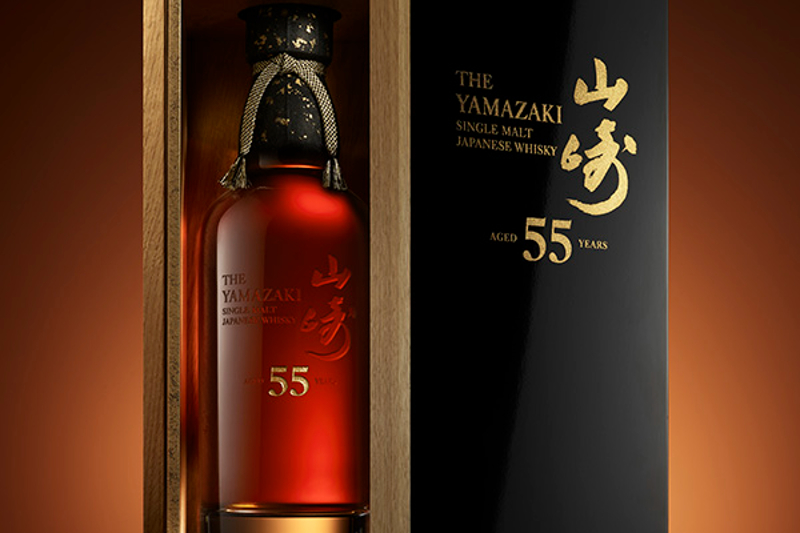
Interested in sipping 55-year-old Japanese Whisky? All you need is $60,000 to drop on one of 100 limited bottles of Yamazaki 55 from The House of Suntory Whisky.
Yamazaki 55 is a blend of precious single malts distilled and aged in Mizunara casks under the supervision of its founder Shinjiro Torii in 1960 and aged in White Oak casks under Suntory’s Second Master Blender Keizo Saji in 1964.
Bottled in 2020, Yamazaki 55’s release will pay tribute to the passage of time, harmony with nature and the founding family of Japanese whisky’s three-generation legacy. In 1923, Torii built Japan’s first malt whisky distillery in Yamazaki. Now in 2021, the House of Suntory’s oldest release celebrates the Japanese “Showa” era of the 1960s, representing a major period of change for the House of Suntory.
Fifth-generation Chief Blender Shinji Fukuyo worked closely with third-generation Master Blender Shingo Torii in deploying Suntory’s signature blending to reveal the exceptional depth and complexity that is Yamazaki 55. The resulting whisky features a deep amber color, a robust sandalwood aroma with a ripened fruit, woody palate and a sweet yet slightly bitter rich finish.
“Throughout the process of blending Yamazaki 55, I used as inspiration ‘wabi-sabi’ — the Japanese belief that imperfections can help to ultimately contribute to perfection,” Fukuyo said in a press release. “While I often view other extra aged whiskies as art, I consider Yamazaki 55 to be more like a Buddhist statue: Calm and mysterious, requiring time to truly enjoy the inner beauty.”
Related Guides
- Best Japanese Whisky Brands
- Perfect Scotches
- Classic Whiskey Cocktails
- Best Whiskies For Whiskey Sours
Yamazaki 55 is presented in a crystal bottle with the word “Yamazaki” engraved in sandblasted calligraphy that features real gold dust on its age marking. The bottle’s packaging is wrapped in handmade Echizen washi paper and bound with a Kyo-kumihimo plaited cord — a traditional Kyoto craft. Each bottle will be delivered in a bespoke box made from native Japanese Mizunara wood and coated with Suruga lacquer.
To honor its ongoing societal commitment, Beam Suntory will donate $5,000 for every bottle released in the 100-bottle collection, which aims to offer a total of $500,000 to The White Oak Initiative, a group committed to the long-term sustainability of America’s white oak forests.
The extremely limited bottles of Yamazaki 55 were initially released in Japan in 2020 and will reach select global markets in the United States, the United Kingdom, Mainland China and Taiwan later this month. More information is available at www.beamsuntory.com/en/brands.
Read More: The History and Growth of Japanese Whisky



